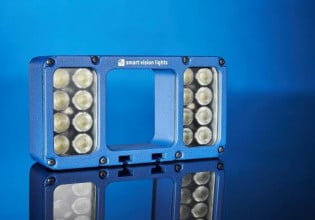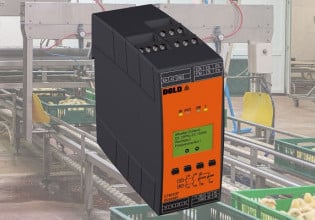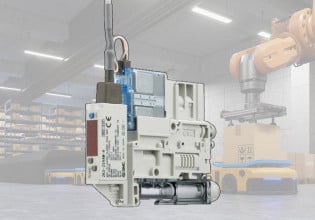Lütze Expands LOCC-Box System With New IO-Link Gateway
Lütze has released an IO-Link gateway to provide users with greater communication and connectivity. The new gateway can connect up to fifteen of the company's LOCC-Box-Net modules in new and existing systems.
Lütze has released a new IO-Link Gateway (p/n 716455) to deliver greater flexibility for remote monitoring and data analysis in its LOCC-Box current monitoring system.

Lütze’s new IO-Link gateway is the same size as the LOCC-Box-Net modules and can connect up to 15 LOCC-Box modules. Image used courtesy of Lütze
What Is IO-Link?
IO-Link is the global communication standard (IEC 61131-9) that provides a digital point-to-point interface whose sole purpose is to enhance the communication between a control system, sensors, motor-starters, and actuators. For those unfamiliar with point-to-point interfaces, it is a direct connection with only two endpoints. Doing so means communication can only occur between those nodes.
IO-Link uses bidirectional wired or wireless signals to transfer real-time data signals more accurately and reliably than conventional analog signals. IO-Link has multiple advantages for integrators and businesses alike. IO-link has proven to help reduce costs for automation by standardizing and reducing wiring. It can reduce the size of control cabinets by cutting the need for unnecessary hardware.
IO-Link can also send diagnostic and machine monitoring data, allowing personnel to monitor trends, improve the overall efficiency of machines, monitor faults, and monitor device health. IO-Link allows integrators and maintenance personnel to monitor and configure connected devices remotely. Once parameters are stored, controllers can automatically configure replaced devices based on the previously stored parameters. Doing so leads to decreased downtime and increased efficiency.

Lütze’s new module brings gateway communication capabilities to the company’s LOCC-Box current monitoring system. Image used courtesy of Lütze
The LOCC-Box Current Control System
Lütze’s new IO-Link module brings gateway communication capabilities to the company's LOCC-Box current control system.
Lütze’s LOCC-Box is an intelligent current monitoring system that protects overload and short circuit situations in 24 V DC systems to help minimize downtime. The LOCC-Box system uses electronic circuit breakers (ECB) with features such as an adjustable current range of 1 A to 10 A, remote monitoring, remote on/off, and two types of output alarms.
The first output alarm uses a flashing LED indicator light once the circuit reaches 90% of the maximum current load. The second output alarm signals a red LED indicator and transmits a 24 V signal when the breaker trips due to current overload or short-circuit. One unique feature of this system is Lütze’s patented adjustable characteristics: fast, medium, slow (1), slow (2), and slow (3) to suit any current load conditions.
-
Fast provides a rapid response.
-
Medium provides a balanced response.
-
Slow (1), (2), and (3) provide a gradual response.

Lütze's LOCC-Box accessories include 12/24 V supply sets and an empty terminal for future expansion. Image used courtesy of Lütze
Remote Current Monitoring
The LOCC-Box system is modular and has multiple components to help keep the electronic control enclosure neat and compact. Some of the components that Lütze provides are 12/ 24 V supply sets and additional 0 V terminals to supply the system, empty terminals or spacers for expansion, bus bars and insulated jumpers, and end terminals. Lütze also provides added features such as LOCC-Box Net for remote monitoring and analysis capabilities and LOCC-Pads software for custom parameter settings, diagnostics, and analysis.






